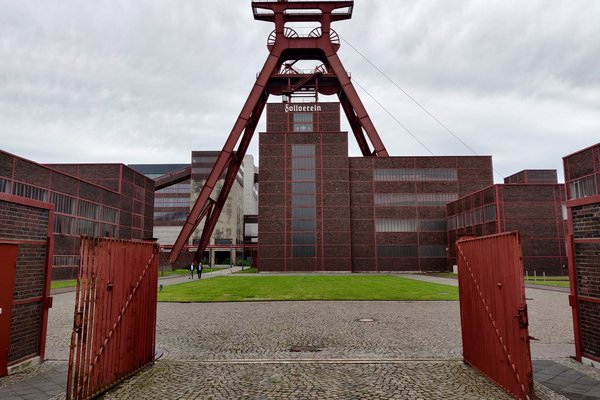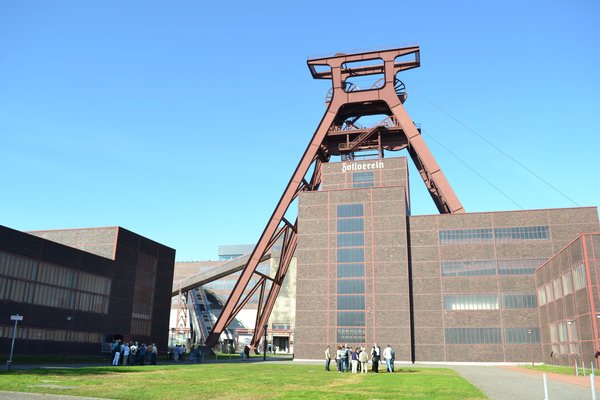Germany
Zollverein
The Zollverein Coal Mine Industrial Complex in Essen represents the development of traditional heavy industries in Europe and the innovative architecture that was used.
Mining here started in the mid-19th century, along the major railway to Cologne. Its complete installations (including pits, coking plants, pit heaps and miner’s housing) have been preserved. Zollverein XII (shaft no. 12) from 1930 is especially noteworthy for its modernist architecture, where both functionality and aesthetic qualities counted.
Community Perspective: The site is very large and a guided tour is recommended. Many of the buildings nowadays are used for art exhibitions; the Red Dot Design Museum for example is worth looking inside. Hubert has provided an excellent overview of what’s to see. For an opposite view, read Solivagant’s ‘rant’.
Site Info
Official Information
- Full Name
- Zollverein Coal Mine Industrial Complex in Essen (ID: 975)
- Country
- Germany
- Status
-
Inscribed 2001
Site history
History of Zollverein
- 2001: Inscribed
- Inscribed
- Type
- Cultural
- Criteria
- ii
- iii
Links
- UNESCO
- whc.unesco.org
- Official
-
- zollverein.de — Zollverein.de
All Links
UNESCO.org
- whc.unesco.org — whc.unesco.org/
Official Website
- zollverein.de — Zollverein.de
Community Information
- Community Category
- Secular structure: Mines
Travel Information
One million visitors or more
See www.waz.de
Recent Connections
-
No Map
But there is one in the Management Plan…
-
North Rhine-Westphalia hotspot
-
Built in the 20th century
In 1927 two young architects, Martin Kr…
Connections of Zollverein
- Trivia
-
-
Dubbed as another WHS
The 55mtr winding tower has been called "The Eiffel Tower of the Ruhr" -
Depicted in Mizielinska Maps
See i.pinimg.com
-
In Video Games
Civilization VI -
One million visitors or more
1.5 million (2017)See www.waz.de
-
- Architecture
-
-
Brick architecture
several main buildings are made in dark brown bricks -
International style
Criterion (ii): "application of the design concepts of the Modern Movement in architecture in a wholly industrial context" -
Expressionist architecture
It was “created at the end of a phase of political and economic upheaval and change in Germany, which was represented aesthetically in the transition from Expressionism to Cubism and Functionalism.” Wiki however categorizes it under New Objectivity, part of the International Style.
-
- World Heritage Process
-
-
No Map
But there is one in the Management Plan from 2022
-
Perfect Inscriptions
2001
-
- Human Activity
- Constructions
-
-
Railways
-
Pumping Stations
Several "Pumping Stations are included - e.g "At the Essen-Schonnebeck pumping station, a 500 m long section of a developed bricklined drainage canal has been preserved. It documents the mine´s activities relating to the control of the gravitational flow into receiving waters" (nom file)
-
- WHS on Other Lists
- Timeline
-
-
Built in the 20th century
In 1927 two young architects, Martin Kremmer and Fritz Schupp, began work on designing the new central shaft site XII on the principle of "form follows function".
-
- WHS Hotspots
News
No news.
Recent Visitors
Visitors of Zollverein
- Adrian
- Adrian Turtschi
- Alberto Rodriguez Gutierrez
- Alexander Lehmann
- A. Mehmet Haksever
- Ana Lozano
- Antonio J.
- Argo
- Aspasia
- Astraftis
- a.thum
- Atila Ege
- Aunti
- Badwater
- basementonline
- BaziFettehenne
- Bill Maurmann
- Bin
- BJGreasly
- BobSmithseestheworld
- Bram de Bruin
- brendairala
- Brendan Carroll
- c82wc1
- CampbellME
- Can SARICA
- Cezar Grozavu
- CherylKla
- Chole Ross
- ChrisDorn
- Christer Sundberg
- Christian Wagner
- christof
- Christoph
- Christravelblog
- Claire Bradshaw
- Cluckily
- Clyde
- Colossus
- Csaba Nováczky
- ctravel
- CugelVance
- czesioszpachelka
- Daniel Chazad
- Daniel Gabi
- Danny L
- David Berlanda
- Dimitar Krastev
- Dirk-pieter
- Dorejd
- Dwight Zehuan Xiao
- Echwel
- Elf21
- Elis
- Els Slots
- erdsaumnaht
- Errol Neo
- Eva Kisgyorgy
- Evgenii
- fabi-ddorf
- Fan Yibo
- Farinelli
- Federico P.
- Feldhase
- Femke Roos
- FK
- Frederik Dawson
- FS
- Garrett
- Gary Arndt
- Geert Luiken
- George Gdanski
- GeorgeIng61
- Gernot
- grimloch
- Hadrianus
- Harald T.
- Harry Mitsidis
- henrik_hannfors
- heywhatever2
- Hubert
- Iain Jackson
- Ian Cade
- Ingemar Eriksson
- Ingrid
- inomusay
- Ivan Rucek
- jacob76
- Jakob F.
- James Bowyer
- Janina Lehmann
- janis
- Jan-Willem
- Jan Zimmermann
- Jarek Pokrzywnicki
- Jasam
- Jay T
- Jesse S 2010
- Jezza
- Joel on the Road
- Jonas Hagung
- Jonas Kremer
- Jon Eshuijs
- jonstst
- Joyce van Soest
- Juha Sjoeblom
- Jurre
- Kbecq
- Klaus Freisinger
- Knut
- Kristin
- Kurt Lauer
- Lado Joel
- Lara Adler
- LaVale
- lichia
- Lisu Marian
- Luis Filipe Gaspar
- Lukasz Palczewski
- Maciej Gil
- Maciej Gowin
- Mahuhe
- Manuelfunk
- marcel staron
- Martina Rúčková
- Marty
- Max
- MaxHeAnouBen
- MaYumin
- MH
- M. Huineman
- Michaela0705
- michaelsballard
- MichaelStro
- Michael Turtle
- Mikko
- Mikko Syrjä
- MMM
- Mo-han Je
- MoPython
- MRZVA
- nan
- Nasebaer
- Niall Sclater
- Nicole Lampos
- Nihal Ege
- Nuria8
- PabloNorte
- Patrik
- Paul Schofield
- Persian Globetrotter
- PeterA
- Peter Lööv
- Petteri
- Philipp Leu
- Philipp Peterer
- Pieter Dijkshoorn
- Piotr Wasil
- Rafał Kałczuga
- Ralf Regele
- Ralf Rotheimer
- Randi Thomsen
- Reiseblitz
- Reisedachs
- Reza
- Rodinia
- Roger Ourset
- Roman Bruehwiler
- Rudegirl
- Sabrina Liebehentschel
- Sandmann15
- Schnitzel
- Sebasfhb
- Sehnsuchtsbummler
- Sergio Arjona
- Shandos Cleaver
- Shijie ZHU
- SirLoydd
- Slavi
- Solivagant
- Stanislaw Warwas
- Stefan A. Michelfeit
- stephanvermeulen
- Stijn
- Sturuss
- Svein Elias
- Szucs Tamas
- Tamara Ratz
- Taotao Chen
- Tevity
- Thomas Buechler
- Thomas Harold Watson
- Thomas van der Walt
- Timonator
- triath
- Tsunami
- Twobaconsandaboston
- usagi1974
- Vanessa Buechler
- VLabhard
- WalGra
- Walter
- Westwards
- Wo_ko
- Xiquinho Silva
- YaroMir
- Yevhen Ivanovych
- Zach
- Zhenjun Liu
- Zoë Sheng
- ZZSong
- Александар Стојиљковић
Community Reviews
Show full reviews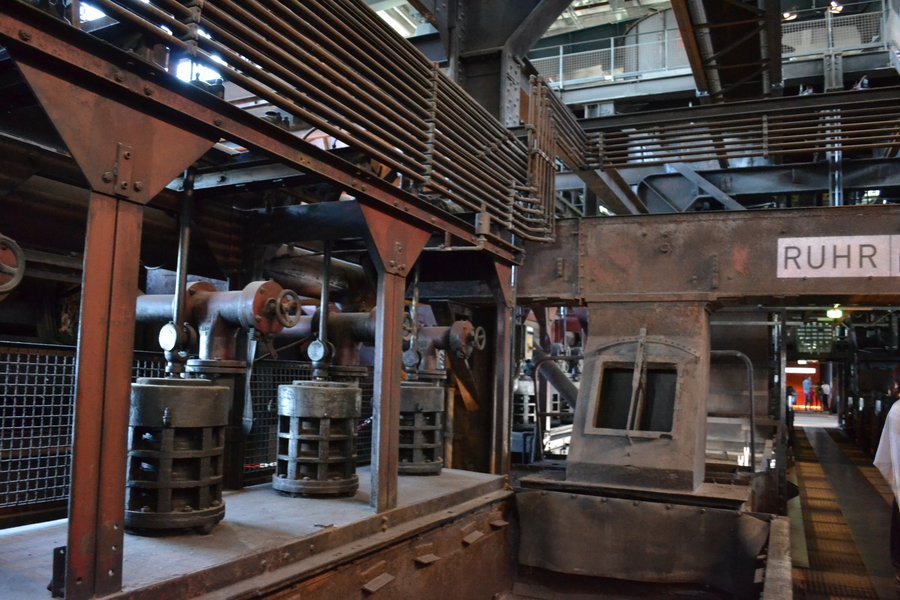
I visited Zeche Zollverein in September. Since there are so many detailed reviews on content etc. I focus on the "post-corona" update and some organizational hints.
Access: Very easy from downtown Essen by public transport in 24 minutes, and even from Düsseldorf main station it only takes less than an hour. But also by car it is easy and parking is available. Nearest bus/tram stations are: „Zollverein“ (Tram 107), „Zollverein-Nord“ (Tram 107, Bus 170, Bus 183 oder Train RB32) or bus stations „Kokerei Zollverein“ or „Kohlenwäsche“ (Bus 183).
The area is accessible without entrance fees, but it makes much more sense to take a guided tour (charged, but not too expensive). Also, the different museums (e.g. the very famous Red Dot Design Museum) do cost money. There are several tours available from 30 min to 2 hours. Some tours include reports from people who really worked there. Also for people who cannot or don´t want to walk, there are bus tours around the huge area. There are no Corona measures neccessary anymore.
Keep reading 0 comments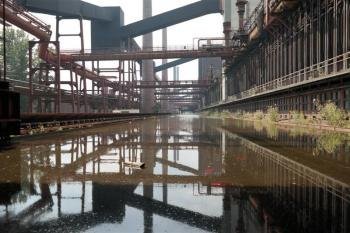
The Zollverein site as such can be visited free of charge. Some buildings are currently used as museum, restaurant, ... and can be visited in this capacity. However, if you want access to (some of) the old production buildings, a guided tour is the only way.
We took the 4 (!) hour 'Von Kohle und Koks' tour which covers the both shaft XII coal mine and the coking plant. Unfortunately, this tour is only available in German but other (shorter) tours are also offered in English.
We especially liked the coking plant as this part seemed a little less 'cleaned up' than the coal mine. Apart from the tour, it is also worth wandering around the rest of the site (shaft 1/2/8, the old train tracks, ...).
Given the size of the site, one can spend a full day in Zollverein, especially if you intend to visit the musea (which we did not do).
As mentioned by other reviewers, Völklingen Ironworks comes to mind as comparable site (i.e. closed down heavy industries). We preferred Völklingen over Zollverein, but Zollverein is certainly also worth a visit if you like 'industry WHS'.
Keep reading 0 comments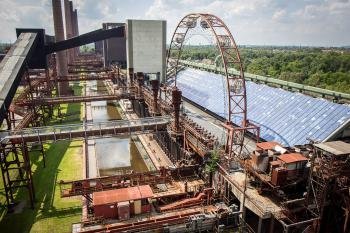
I absolutely loved this site - but I'm always a fan of the industrial heritage. It's been preserved really well (although I did prefer Volklingen for its aesthetics, I have to admit).
There are several ways to approach a visit to Zollverein. You can go for the history, for the modern culture, or for a mixture.
In terms of the history, it is possible to get guided tours of some of the original surface buildings of the coal mine, including the facilities that were used to handle the material being brought up from underground. If this is your first time to the site, it is well worth doing.
Also, the Ruhr Museum in the former coal washing plant of Shaft 12 has permanent exhibitions about the history of the region and the mining industry on the site. It is a large and very well curated museum that would appeal to adults and children.
Keep reading 0 comments
I enjoyed Zollverein when I visited in August 2015. There was a German gourmet food festival going on (apparently not an oxymoron!), with dozens of stalls selling food mostly consisting of pork. We took the opportunity to try currywurst for the first time, and washed it down with a welcome glass of Pilsner.
Walking among great hulking industrial buildings and passing fearsome-looking pieces of mining paraphernalia was pleasant but also poignant. This site, after all, was a key engine of Germany's 1930s rearmament that contravened the Treaty of Versailles as it geared up to launch the Second World War.
We reached the site on foot from the Essen-Zollverein Nord S-Bahn station, having come from Dusseldorf airport and changes trains in Essen.
Keep reading 0 comments
This is a film about the German industrial World Heritage Sites Zollverein and Völklingen (Swedish voice-over and English subtitles).
Keep reading 0 comments
Oh dear – I am going to be the “party pooper” on this one! Everyone else has loved it. I thought it was “thin” on value and very poorly presented. Ok it is “big”. But so what? Perhaps the fact that I worked my whole career in heavy industry makes me less susceptible to seeing that as a “wow factor”. And a mine you can’t go down the shaft of?? Well it’s “neither use nor ornament” is it. Look at Blaenavon and Wieliczka.
When you arrive, finding out what you can do from among all the options is like pulling teeth. One thing you can be sure of – almost everything costs “extra”! The tours seem designed to ensure that you can’t go on 2 of them on the same afternoon – and they cost an arm and a leg. We decided to go to the Ruhr Museum as it seemed to be the ONLY way we could visit the viewing platform, and paid our 8 Euro pp. This also allowed one to go to an additional section titled the “Portal of Industrial Heritage”. This seemed to consist of a large stairwell in which models of industrial buildings were hanging, followed by a room containing some industrial photos leading to a circular “cinema” with a totally missable 360 degree “propaganda” movie showing happy Ruhrgebieters enjoying themselves cycling, walking etc in their transformed industrial landscape. Whilst we waited for the next showing we decided to fill the time …
Keep reading 0 comments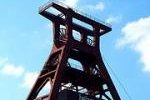
I visited this WHS in May 2013. The area includes 6 shafts, the coking plant and what has now been converted to the Ruhr Museum. There are 2 ways to explore this site: using the media guide and going around alone, together with a guide (only way to enter the coking plant). In the afternoon, the only tour in English is at 3pm and is 2 hours long. The Ruhr Museum is inside one of the shafts and offers an opportunity to see the old rusty machinery up close. The museum is huge and there are permanent exhibitions, temporary exhibitions, a 360 degree panoramic film, an observation deck to take in the breath of the whole Ruhr area and the Zollverein. If you visit this WHS on a rainy day you won't be disappointed!
Keep reading 0 comments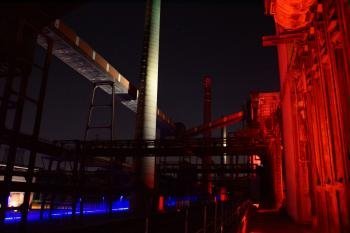
The Zollverein coal mine is always described with superlatives: “the most beautiful coal mine of the world” or “the largest coking plant in Europe”. Absolutely justified, the complex fascinates by its size and by the combination of powerful technology and extraordinary architecture. The WHS comprises three parts: the founding shaft 1/2/8, the shaft XII complex, and the coking plant. Coal mining at Zollverein began in 1847. In the following decades an industrial landscape of several connected pits emerged. At the beginning of the 1920s, the mine was no longer profitable and not further expandable. Thus, the owners decided to combine the facilities and to construct a new high-tech plant: Shaft XII.
The special feature of Shaft XII is that all buildings were constructed according to a consistent architectural concept. In only four years, from 1928 to 1932, twenty cubic buildings were constructed inspired by the Bauhaus style. The buildings consist of steel frameworks and self-supporting curtain façades made of red brick. They not only looked good, they were also extraordinarily practical. The purpose of the individual buildings is not visible from the outside, the whole plant forms a functional and aesthetic unit.
Like most visitors, we entered Zollverein at the so-called “Court of Honour" with the iconic headframe. The view is still as impressive as it probably was 80 years ago. We first went to the visitor centre in the former coal washing plant, visitors enter the building at the upper level via a modern escalator. Various guided tours are …
Keep reading 0 comments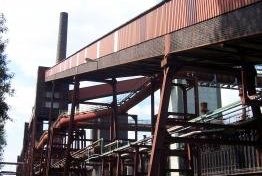
Much like other reviewers I just visited this site to tick another one of my list, however I found it to be a highly rewarding trip and Zollverein is one of the finest industrial WHS I have visited.
When I first looked up the site I didn't realise the extent to which the Architecture of the site as an important part of the inscription. The fist complex was actually beautifully designed, a real functionalist masterpiece drawing on the influence of the Bauhaus movement. The modern additions to the site were well done, especially the bright orange escalator that led into Kohlenwasche in Schacht 12.
There were maps dotted around the complex, however many times I did end up walking down paths that lead nowhere or to some sort of derelict end. However this was a real highlight for me, seeing the decaying ruins of the industrial past being absorbed and subsumed by the local fauna was really interesting, I just wish I had taken a better camera with me.
After touring the first two complexes I moved on to the Kokerei. The massive decaying remains were actually quite beautiful. Unfortunately the Sonnerad (Ferris Wheel) was closed and the swimming pool was emptied of its water but it was still a great location to stop for a quick beer in the afternoon sun.
It was pretty easy to get to the complex with a tram (107) running directly there from Essen Hbf (Main Station)
This as one of the finest Industrial …
Keep reading 0 comments
Very impressive structure and just the size, 1,1 km2 is a really big site. I loved the architecture, the great plan and that it was so strictly restored.
A guided tour gives information that coal mining was hard work and that european coal mining is doomed as they have to go more than 1000m deep to find more coal. Very interesting, but you better learn german to understand homepage and information at site.
Keep reading 0 comments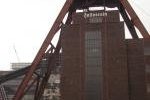
Thanks to the World Cup that took me back to Germany again. Zollverein was on my list to visit for a long time, but going to Germany for just to see this industrial complex was quite worthless in my idea. This world cup opportunity made me decided to visit the Ruhr area in the morning before the match in the evening and Essen was my prime target.
Ruhr area is an industrial powerhouse of Germany for a long time, but I really surprised to find out this region is very nice and very green despite of many factories and densely population. Essen or "Stahlstadt" by many Germans was famous for coal and Steal production and Krupp family with few tourist attractions, and the most popular sight is Zeche Zollverein coal mine complex.
The complex is very big and has many buildings built in Bauhaus inspired style making this mine looks very stylish and modern. I have to admit that this mine complex is really unique and its buildings are worthwhile to see. Unfortunately, the main buildings were closed for restoration during my trip so I did not have opportunity to see the mining museum. But the complex is not just a museum; many buildings in the complex have been transformed to be contemporary art museum, conference hall, cinema, restaurant, and even casino.
So far Zollverein is nice and should be the place to visit when you are in Essen. I also recommend you to go to this complex before it …
Keep reading 0 comments
This year I decided to escape from carnival parties and went to Essen to visited a friend of mine there. Together we booked a guided tour through the complex of Zeche Zollverein - and we were the only ones on this Saturday afternoon who wanted to join the last guided tour of the day, so it was a private tour for us. ;-)
The guide formerly worked in this coal mining complex and so he could tell us many things he experienced during his time there. It was interesting to get to know how this whole cole mining thing goes on. Nowadays most buildings are used for exhibitions, concerts etc. ... nice to visit, when you spend a day in Essen. And don't miss the beautiful synagogue in Essen's city centre.
Keep reading 0 comments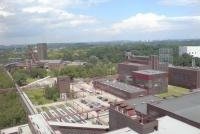
I visited only the Schacht XII and the coalwash. The guide was a young lady who really loves her job. Unfortunately it was only in german so i didnt understand everything well. The areal is built in cubism.
If you are a fan of technics this is a must see, if not then in this site you can learn much about coalmining processes and history too. This site is quite large, so prepare to take good shoes.
Pic: view on site from the roof of the coalwash
Keep reading 0 comments
Being no particular fan of industrial history, I just went to Essen to see another WH site, but I was pleasantly surprised. Zollverein is a really big (14 sq.km) industrial complex that was the biggest coal mine of its day (1920s and 30s), and the grand industrial architecture served the purpose of impressing visitors with the mine owner's wealth and power. I took a guided tour that took almost 2.5 hours - the guide was really great and very informative. Now I know everything I never thought I wanted to know about coal-mining and especially about the miserable and dangerous lives of the miners there. The site is interesting for its architectural as well as economic and social history, and definitely deserves a visit.
Keep reading 0 comments
I found it a bit spooky to walk here on my own on a quiet Sunday morning. The complex is huge, with multistorey buildings, bridges, railway lines, and towers. All in the same dark red colour.
Since the mining here stopped, nature is beginning to win back its territory. Most of the railway tracks and the smaller industrial leftovers are now covered with moss, grass, and weeds. This adds a special atmosphere to the place - a good location for a film director to shoot a thriller.
Many of the buildings nowadays are used for art exhibitions. The Red Dot Design Museum is worth a visit both for its collection of contemporary design and to take a look inside one of the industrial halls.
Keep reading 0 comments
